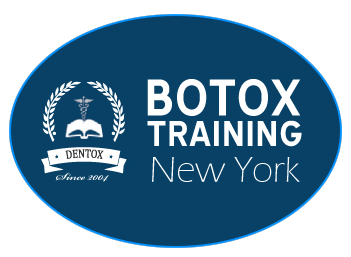
Patients should tell their healthcare provider about all medications, including prescriptions, OTC drugs, vitamins, and herbal supplements.
Botox® is a top choice for aesthetic enhancements, particularly facial rejuvenation. It is mainly used to temporarily reduce moderate to severe forehead lines, crow’s feet, and frown lines between adult eyebrows. While its cosmetic advantages are widely recognized, it is essential to understand the medical implications and possible side effects.
Approved Uses of Botox®
Botox® is a prescription medication specifically formulated for intramuscular injection. It temporarily paralyzes muscles, smoothing out wrinkles and lines caused by repeated facial movements. This effect generally lasts several months, requiring periodic treatments to maintain the desired look.
Serious Side Effects
Serious side effects are possible with Botox®, although the injection itself is usually safe. These potentially life-threatening effects may occur anywhere from hours to weeks after the injection. Critically serious side effects include:
- Dysphagia, Dysphonia, and Dyspnea: Muscle weakening can cause swallowing, speaking, or breathing issues. Patients with pre-existing conditions affecting these functions are at higher risk. These problems can be severe and potentially fatal.
- Systemic Side Effects: In extremely rare cases, botulinum toxin can travel beyond the injection site and cause side effects such as weak muscles, double or blurred vision, drooping eyelids, urinary incontinence, breathing problems, and swallowing issues.
- Loss of Strength and General Muscle Weakness: Some patients may experience generalized weakness, vision problems, or dizziness, which can happen from hours to weeks after treatment. This requires caution in activities requiring full motor coordination, such as driving or operating machinery.
- Allergic Reactions: Serious allergic reactions, although infrequent, have been reported. Symptoms may include itching, rash, red itchy welts, wheezing, asthma-like symptoms, and lightheadedness. Immediate medical attention is necessary if these symptoms occur.
Contraindications and Precautions
Patients should avoid Botox® if they are allergic to any of its components, have had an allergic reaction to other botulinum toxin products, or have an infection at the intended injection site. Patients need to provide their healthcare provider with a complete medical history. Conditions such as Amyotrophic Lateral Sclerosis (ALS), Myasthenia Gravis, or Lambert-Eaton Syndrome may increase the likelihood of side effects like difficulty swallowing and breathing, even at standard doses. Women who are pregnant, planning to become pregnant, or breastfeeding should consult their healthcare provider, as the effects of Botox® on unborn children or breastfed infants are not well known.
Medication Interactions
Patients need to inform their healthcare provider about all their medications, including prescription and over-the-counter drugs, vitamins, and herbal supplements. Some medicines can interact with Botox®, potentially causing severe side effects. Particular caution is required for patients who have used another botulinum toxin product within the last four months, have recently received antibiotics by injection, use muscle relaxants, take medications for allergies, colds, or sleep, and those who use aspirin-like products or anticoagulants. This information is crucial for the healthcare provider to administer Botox® and minimize the risk of adverse reactions safely.
Common Side Effects
In addition to the more severe risks, Botox® can cause a variety of less serious side effects. Patients may experience localized reactions such as pain, discomfort, or tenderness at the injection site. General symptoms, like fatigue and headaches, are also common. Ocular issues can occur, including double vision, blurred vision, decreased visual acuity, ptosis, brow ptosis, eyelid swelling, and dry eyes. Other symptoms may include dry mouth and neck pain. While these side effects are less severe, they can still impact the patient’s comfort and well-being.
Conclusion
While Botox® offers significant benefits by reducing facial lines and wrinkles, potential recipients must be fully informed about both its uses and risks. Patients should consult thoroughly with their healthcare providers, discussing their complete medical history, current medications, and any concerns about the procedure. This helps make informed decisions and optimizes both the effectiveness and safety of Botox® treatments. Always prioritize safety and professional medical advice to ensure the best outcomes from aesthetic treatments.




